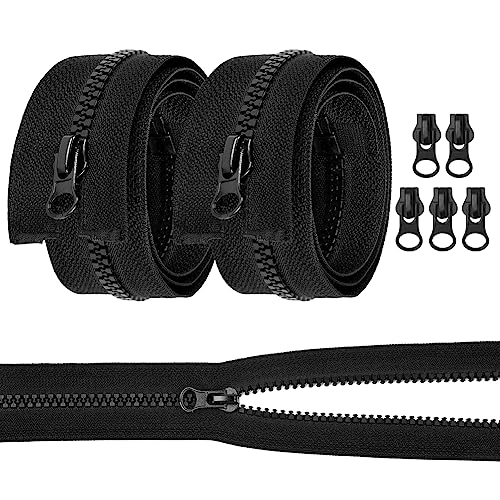What is a zipper?
A zipper, also known as a zip, is a fastening device commonly used in clothing, bags, and other items to securely close an opening. It consists of two strips of fabric, each with interlocking metal or plastic teeth, and a slider that moves along the teeth to open or close the zipper.
The anatomy of a zipper
A zipper has several components that work together to create a functional fastening mechanism. These components include:
- Tape: The fabric strips on either side of the zipper that are stitched or attached to the garment or item.
- Teeth: The individual metal or plastic pieces that interlock with each other to form a continuous closure. These teeth can vary in size and shape depending on the type of zipper.
- Slider: The central component that moves up and down the teeth to open or close the zipper. It typically has a tab or puller attached for easy gripping and manipulation.
- Top and bottom stops: The end components of the zipper that prevent the slider from coming off the teeth. These stops are usually made of metal or plastic and are securely attached to the tape.
- Slider mechanism: The internal mechanism inside the slider that engages and disengages the teeth as the slider moves. It is usually made up of a series of small metal or plastic components.
How does a zipper work?
The functioning of a zipper can be broken down into three main steps:
- Closure: When the slider is moved upward or downward along the teeth, it engages the teeth and brings them together to create a closed position. This is achieved through the alignment of the profiled edges of the teeth with the slider mechanism.
- Opening: To open the zipper, the slider is moved in the opposite direction, creating a gap between the teeth. The profiled edges of the teeth disengage from the slider mechanism, allowing the teeth to separate and the zipper to open.
- Locking: When the zipper is fully closed, the slider mechanism locks the teeth together. This ensures that the zipper does not accidentally unzip or open due to movement or tension.
Types of zippers
There are various types of zippers available, each designed for specific applications and preferences. Some of the most common types include:
- Coil zippers: These zippers have small, flexible teeth made from coiled nylon or polyester. They are commonly used in garments, bags, and accessories.
- Invisible zippers: Also known as concealed zippers, they have a hidden tape and teeth, making them suitable for sewing into garments without being visible on the outside.
- Metal zippers: These zippers have metal teeth, usually made of brass or aluminum. They are known for their durability and strength and are commonly used in heavy-duty applications.
- Plastic zippers: Made entirely of plastic, these zippers are lightweight and moisture-resistant. They are commonly used in outdoor gear, marine applications, and children’s clothing.
Zipper maintenance and care
To ensure the longevity and smooth operation of zippers, proper maintenance and care are essential. Here are some tips:
- Keep zippers clean: Regularly clean zippers by wiping them with a soft cloth and gentle detergent. This helps remove dirt, debris, and oils that can affect their performance.
- Ensure proper alignment: When using zippers, make sure the teeth are properly aligned before engaging the slider. Forcing the slider over misaligned teeth can cause damage and lead to zipper failure.
- Apply lubrication: For stubborn zippers or those that show signs of sticking, applying a small amount of lubricant, such as beeswax or silicone spray, can help improve their movement.
- Avoid excessive force: Do not pull or force zippers beyond their intended range of motion. Applying excessive force can damage the teeth, slider, or tape, compromising the zipper’s functionality.
- Replace worn-out zippers: If a zipper is damaged, has missing teeth, or no longer functions properly, it is recommended to have it replaced by a professional tailor or seamstress. This ensures the item maintains its functionality and appearance.






